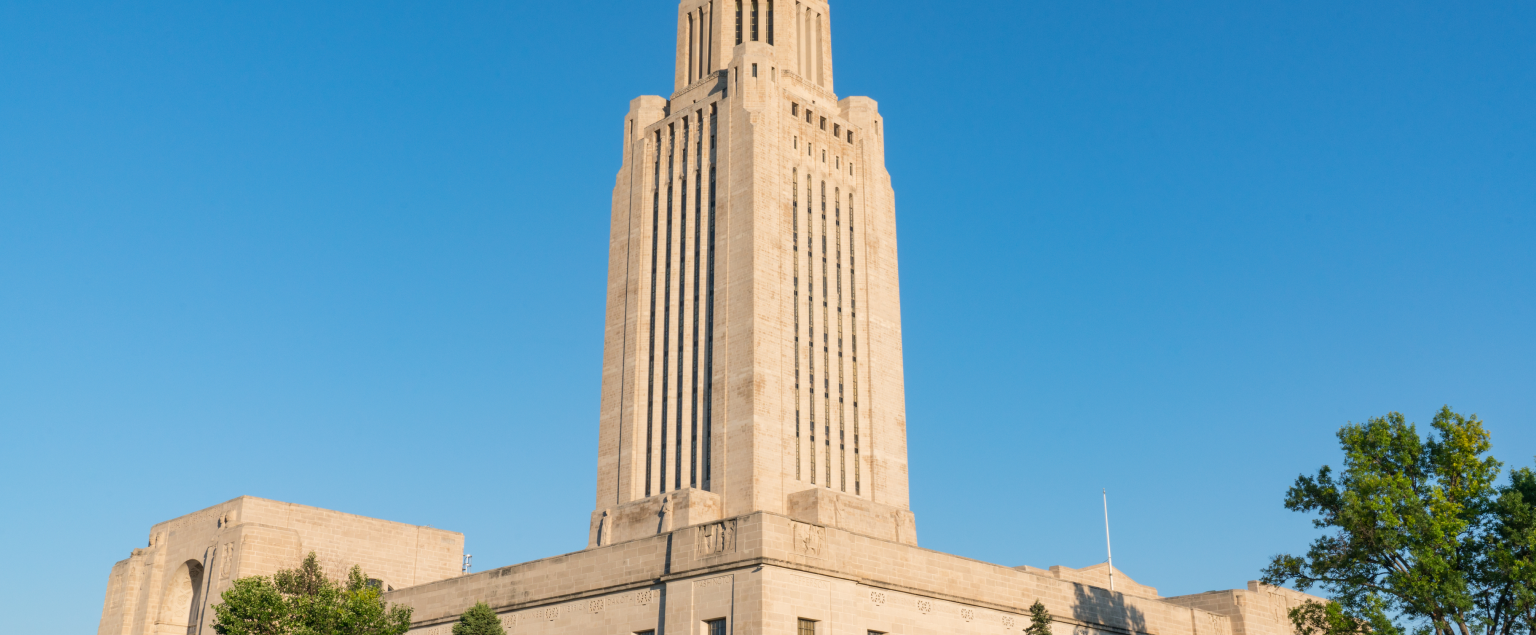The Nebraska Legislature concluded its work yesterday after 89 days of filibusters, floor flights and final reading. When we convened in January, we set the scene with 15 freshmen Senators and one returning veteran, a legislative body grappling with a significant budget shortage, a set of priorities from Governor Jim Pillen, and an ever-changing landscape of federal policy that loomed large in debates. Here’s what we learned.
Checks on Economic Development Incentives
The body considered additional legislation to clean up economic development incentives, namely the Good Life Transformational Projects Act, which has caused significant confusion and contention in the state. A bill by Senator R. Brad von Gillern cleaned up key provisions of the act, meant to incentivize large scale development to spur retail activity and tourism. State Auditor Mike Foley raised red flags about other economic development incentives in memos addressed to the Legislature, which may inspire additional scrutiny in future legislative sessions, particularly with the Nebraska Advantage Act and its replacement, the ImagiNE Nebraska Act. He also questioned the scale of Tax Increment Finance projects, another local economic development tool, and the sustainability of such incentives as the state faces economic headwinds. Additional changes were made to existing programs via LB 650, a Revenue Committee package that rolled back several incentive programs implemented in recent years.
School Funding Scrutiny
LB 303, introduced by Senator Jana Hughes, established a Commission to review Nebraska’s TEEOSA formula by which state contributions to local school districts are calculated. The Commission will meet annually to make recommendations to the Legislature for changes to the formula based on factors such as economic health, property valuation changes, shifting student demographics, inflation costs, workforce availability and more. The Commission will bring together stakeholders in various school districts as well as representatives from state departments and interest groups. OpenSky was a strong supporter of the Commission, as sustainable and predictable school funding is essential for Nebraska’s future prosperity.
More Familiar Faces?
The Legislature passed LR 19CA, which will appear on the ballot in November 2026 so Nebraskans can decide whether to extend the current term limits for Nebraska legislators from two consecutive terms to three. Proponents, including OpenSky argued that the work of the legislature is complex, since subject matter expertise on topics like school finance, budget processes, taxation and a variety of other topics is critical to smart policy decisions. The proposal is now in the hands of Nebraska’s Second House.
Strike Three
For the third time in the last 12 months, the Legislature rejected a proposal to reduce property taxes by generating revenue through the repeal of several sales tax exemptions. Services ranging from pool maintenance to pet grooming would have generated sales taxes under LB 169. Another proposal, LB 170 would also have imposed a sales tax on pop and candy products. Additional “sin” taxes were considered on cigarettes and vaping products and cannabis-derived products. Shifting taxes in this way would have made Nebraska’s already-regressive tax structure even more regressive. Legislators failed to consider LB 171, which would have paused income tax cuts implemented by the Legislature so the body could further assess their impact on both economic development and the state’s budget prior to continued reductions.
The Blame Game
The Legislature’s budget woes were an undercurrent of the entire session, with little money left for new projects or proposals. Several senators tried to point a finger at reduced federal investments in Medicaid by way of a reduction in the FMAP contribution, but these numbers were released with plenty of time to adjust. Others tried to pass the buck and pointed to “exorbitant spending” by local governments and school districts, but failed to acknowledge significant swings in state aid as a driving factor. The body did decline to evaluate previous cuts to income taxes and property tax relief programs that brought the legislature from a $1.9 billion surplus to a $432 million deficit in the course of two years. Instead, the Legislature balanced this year’s budget through a series of accounting tricks including cash fund sweeps, program cuts and a significant draw-down in the state’s savings account, leaving the state on uncertain financial footing as we look to the future.



